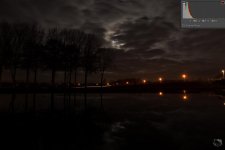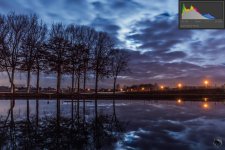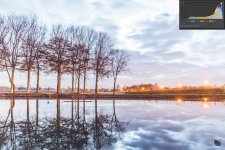This thread is about the difference between exposure and ISO, and the use of in camera processing and post processing to achieve a usable image.
I kind of like the old days when Kodachrome was King. Life was simpler. We had fewer choices.
Load your film and then you only had exposure to worry with, and exposure was a combination of shutter and f/stop.
Exposure was how much and how long the film was exposed. Once exposed, every other adjustment was made in the lab when processing the film or printing prints. Good lab work could do wonders.
Digitally speaking exposure is still exposure. It is the combination of two things that control how much light and how long the light reaches the sensor. This has not changed.
What does ISO do?
In the five examples above, the exposure does not change. So, in each of the five shots the sensor has received the same amount of light for the same amount of time. Ponder this for a moment.
The ISO setting then must tell the camera how to process the sensor information and produce an image file. There's a bit of an unknown world in between the sensor and the image file that is in the hands of the camera's processor.
Those who like experimenting in the unknown world are welcome to post to this thread and those whose are interested are welcome to comment.
I kind of like the old days when Kodachrome was King. Life was simpler. We had fewer choices.
Load your film and then you only had exposure to worry with, and exposure was a combination of shutter and f/stop.
Exposure was how much and how long the film was exposed. Once exposed, every other adjustment was made in the lab when processing the film or printing prints. Good lab work could do wonders.
Digitally speaking exposure is still exposure. It is the combination of two things that control how much light and how long the light reaches the sensor. This has not changed.
What does ISO do?
| f/stop | Shutter | ISO |
| f/2.8 | 1/250 | 100 |
| f/2.8 | 1/250 | 200 |
| f/2.8 | 1/250 | 400 |
| f/2.8 | 1/250 | 800 |
| f/2.8 | 1/250 | 1600 |
In the five examples above, the exposure does not change. So, in each of the five shots the sensor has received the same amount of light for the same amount of time. Ponder this for a moment.
The ISO setting then must tell the camera how to process the sensor information and produce an image file. There's a bit of an unknown world in between the sensor and the image file that is in the hands of the camera's processor.
Those who like experimenting in the unknown world are welcome to post to this thread and those whose are interested are welcome to comment.



